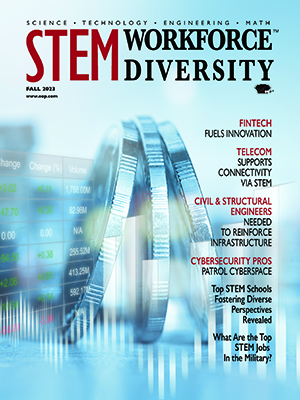| |

Workforce Diversity For Engineering And IT Professionals Magazine, established in 1994, is the first magazine published for the professional, diversified high-tech workforce, which encompasses everyone, including women, members of minority groups, people with disabilities, and non-disabled white males.
to advance in the diversified working community.
This magazine reaches engineering or information technology graduate students or professionals nationwide at their home addresses.
If you are an engineering/IT graduate student or professional, Workforce Diversity for Engineering & IT Professionals is available to you FREE!

|
|
 Workforce Diversity
Workforce Diversity
» Featured Articles
» Subscription Information
» Reader Survey
» Companies Actively Recruiting

DIVERSITY’S ROLE IN THE MODERN WORKPLACE
Richard Greggory Johnson III
As we move forward into the second decade of the 21st century, so must the need for a substantive understanding and embrace of diversity in the workplace. Earlier this year Intel committed $300 million to achieving a more diverse workforce by 2020. While white and Asian men currently dominate its workforce, the goal of this substantial initiative will be to add more women, African-Americans, Hispanics, and other minorities to the mix. This is a huge step forward in leading the way for other companies, especially in STEM related industries, which tend to suffer the most from a lack of diversity.
Diversity as a term has been used in many facets and as such has been watered down. However, the fundamentals of diversity or cultural competence remain constant. The term diversity includes gender, race/ethnicity, sexual orientation, gender identity, religious pluralism, social class, and immigration status. All of these elements are important for the modern day workplace as society is changing from the once single-minded setting to a pluralist society.
Much of the history of the United States has been seen through a non-diverse societal lens. One example is how people of color were portrayed on television shows of the 1950’s and 1960’s – if they were on camera at all. Despite the fact that African-Americans were enrolled in colleges and universities since the 1800’s, they – and other people of color – were mostly depicted as maids and porters on television shows of the mid 20th century. The lack of attention to race and gender in a positive way in the shows of the 1950’s and 1960’s was glaring. Meanwhile. LGBT (Lesbian, Gay, Bisexual and Transgender) persons were for the most part absent except for comedic relief.
DIVERSITY TODAY
Many of the television shows addressed above are painful to watch in 2015. But while these shows demonstrate some truths about American culture, they also demonstrate how far society has come and more importantly how far America must go in order for parity to be reached – not only in the workplace but within society at large as well. Today’s manager must have a keen understanding of why diversity is important in the workplace. Indeed, many employers still consider diversity an after-thought or numbers crunching game in terms of how many persons of color and women they (the employer) must hire in order in order to be considered diverse.
Managers, CEO’s, and the like will need to incorporate a diverse workforce into an organization’s structure as a value and not merely a matter of lip service. Women and persons of color are entering the workforce at unprecedented rates compared with the 20th century, and they are making substantive contributions.
So too is the out LGBT population. In late June, the Supreme Court issued a landmark decision, ruling that all 50 states must allow same sex marriage. Private and public companies will need to be aware that that public opinion regarding sexual and gender orientation is greatly shifting from views of the 1950’s and 1960’s. Therefore, welcoming LGBT employees will also mean being able to attract some of the most talented employees available for a position.
Managing diversity in the modern day workplace will take skill and understanding that a diverse workforce will produce the best possible outcome and or solution of an organization.
Richard Greggory Johnson III is an associate professor of the online Master of Public Administration program in the School of Management at the University of San Francisco. He is also a member of the Phi Beta Kappa Society.
 » Feedback for the Editor
» Feedback for the Editor
» Request Article Copy
|
|